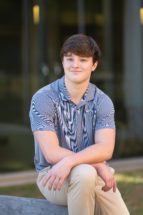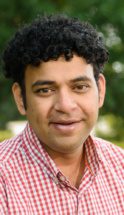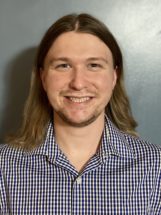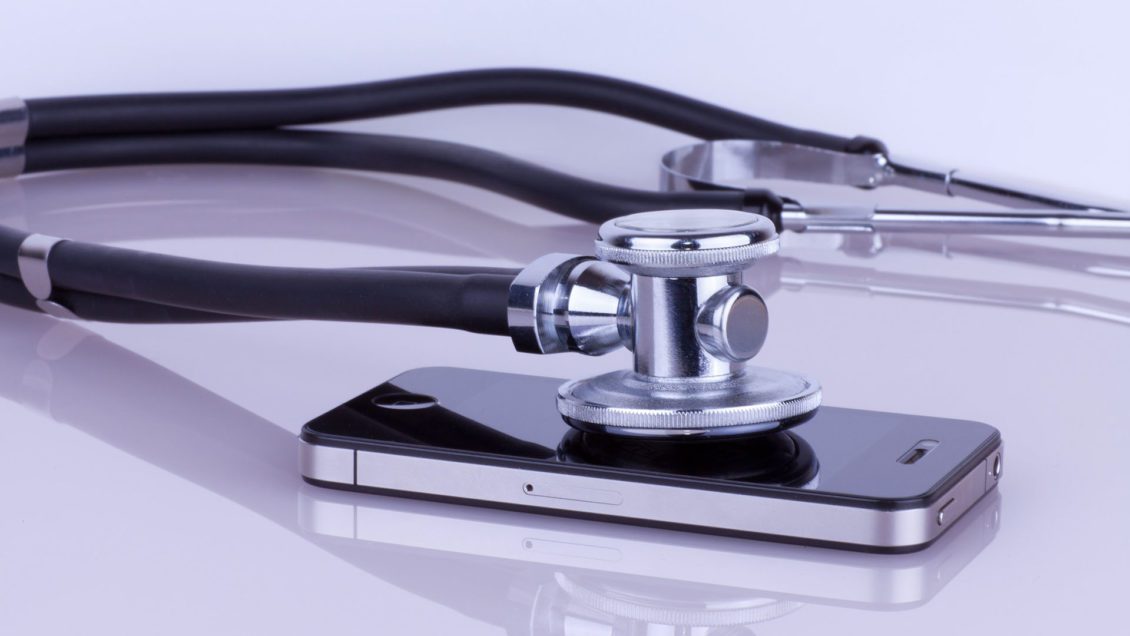Two Clemson University students placed in SCBIO’s Challenge Accepted video competition for their videos presenting research from the lab of Ramakrishna Podila, an associate professor in the Department of Physics and Astronomy, on inexpensive COVID-19 and tuberculosis sensors using smartphones.
Alan Rowland, a first-year graduate student in physics from Easley, South Carolina, and Dylan Carroll, a first-year genetics major from Knoxville, Tennessee, won second and third place, respectively.
Highlighting innovation
Participating students created videos no longer than three minutes highlighting life science innovation or research in South Carolina. The videos were judged on the content, production quality and creativity, and potential impact of their work on the industry.
The competition was part of SCBIO’s annual conference held February 22-24 in Charleston. SCBIO is a member-driven organization formed to advance South Carolina’s life science industry through collaboration, advocacy and resource support. It provided students a creative way to engage with the state’s life sciences ecosystem, said Zach Hargett, SCBIO’s programming and special projects director.

“Connecting students with companies in South Carolina is a critical part of developing our state’s workforce. The SCBIO student video competition is a unique way to highlight several of South Carolina’s best and brightest minds in front of hundreds of industry leaders throughout the state and country,” Hargett said. “We believe programs like this, our student membership program and student-industry engagement sessions are giving both students and companies a unique platform to get the most out of South Carolina’s life sciences ecosystem.”
The COVID-19 pandemic illustrated the need for access to convenient, inexpensive testing that facilitates rapid diagnosis to help stop the spread of diseases, Carroll said.
Carroll’s video focused on how Analtye-induced disruption in luminance quenching (AIDLuQ) technology is used as a sensor. AIDLuQ uses regular printer paper coated with graphene particles that a smartphone could read to detect disease.
Access to testing
“As we’ve seen during the COVID-19 pandemic, there’s been lots of problems with access to testing and how long it takes to get results,” Carroll said. “With Dr. Podila’s research, you could get test results in under 15 minutes at home using your smartphone. That would solve a lot of problems with access to testing.”
Rowland’s video focused on research that turns a smartphone into a spectrogram to detect tuberculosis, a bacterial infection that attacks the lungs. Tuberculosis is the leading infectious disease killer in the world.

“Often, tests have to be done by trained medical professionals. That can be a problem,” Rowland said.
While some people would think lack of access to medical tests would be a problem in the developing world, it also affects countries like the U.S., Podila said.
“While the COVID test is free, if there is any other test, you pay a minimum of 100 bucks. You have to go to the doctor, and that’s another 100 bucks for the copay. You have to make an appointment, which can take time,” Podila said. “The whole idea behind this research is to take existing technology, in this case a smartphone, to allow for accessible health care.”
The sensors are ready for human clinical trials, Podila said. Bharat Biotech, a COVID-19 vaccine manufacturer in India, has inquired about using the sensors developed by Podila’s lab to check antibody levels of people in their clinical trials.
Explaining the science
Rowland said the most significant challenge he faced when producing his video was to explain the technology so non-scientists could understand.
“Often, the biggest issue in science is explaining research in a way that’s not science,” he said. “Time was the biggest challenge in making the video because you have to take this research that has taken months, or even sometimes years, to do and condense it down into a marketable video that somebody could watch and say, ‘I can help on that project.’”

Carroll said he wanted his video to grab attention, so he bought a $20 animation software program.
“Whenever I’ve needed to watch science videos in the past, it was always some sort of animated video that grabbed my attention,” he said. “I wanted to make it anecdotal, something that could relate to everyone. I wanted it to grab the attention of anyone who’s ever traveled and needed medical care. Once I grabbed their attention, I wanted to bring in the science aspect of it and how the device could benefit them and society.”
SCBIO CEO James Chappell said, “The SCBIO student video competition is a unique way to cultivate relationships between life science industry leaders and some of our most talented students. This relationship leads to career opportunities for the individual students and establishes comfort and familiarity between the companies and schools, leading to a more long-term talent pipeline.”
One of Podila’s main goals is to train students to communicate.“Knowledge is its own reward,” Podila said. “We not only teach them physics, we not only teach them science, but we also teach them how to communicate effectively,” he said. “I’m happy Dylan and Alan put in the effort and won the contest. But for me, they already won when they made the video because they learned something. That was the real prize.”
Get in touch and we will connect you with the author or another expert.
Or email us at news@clemson.edu

